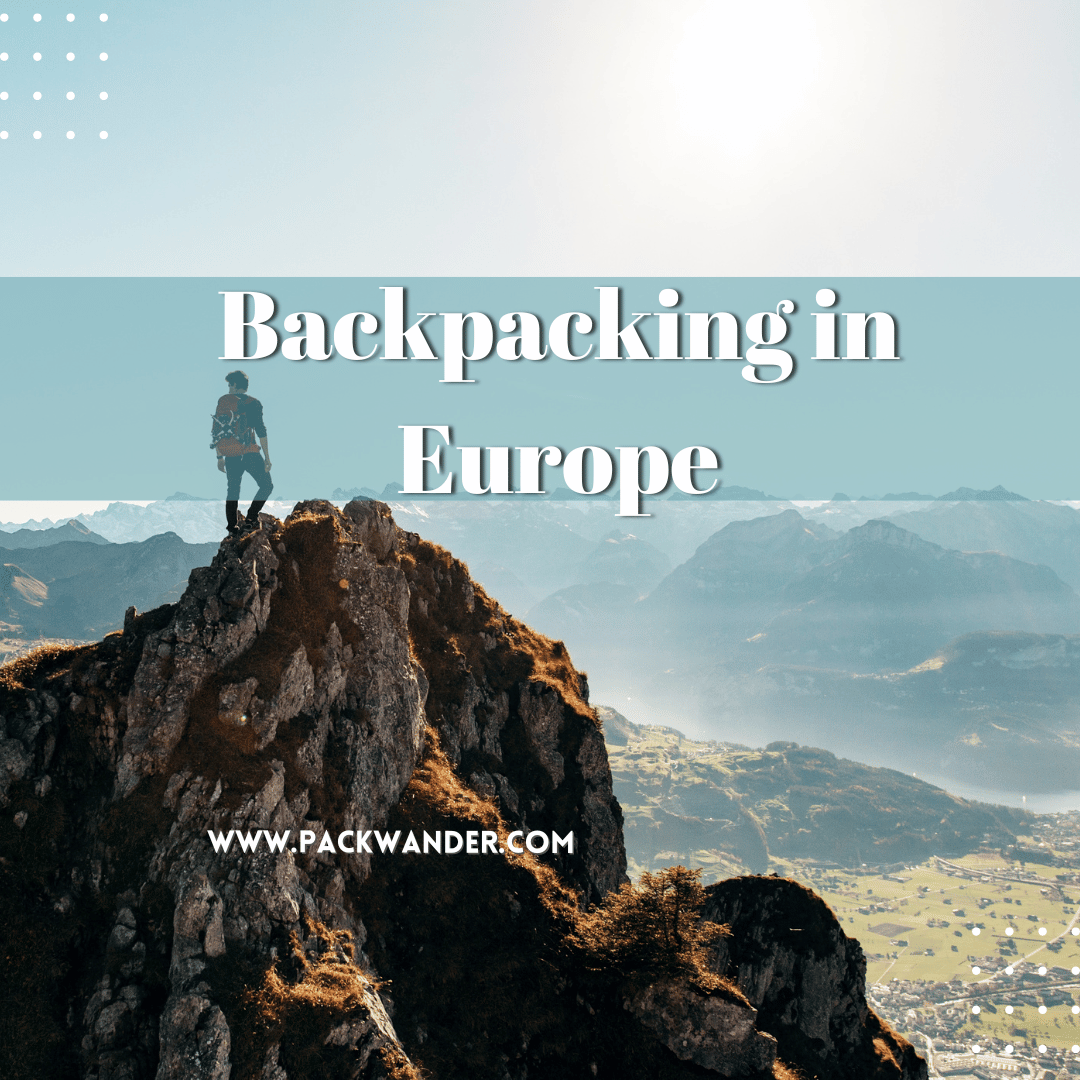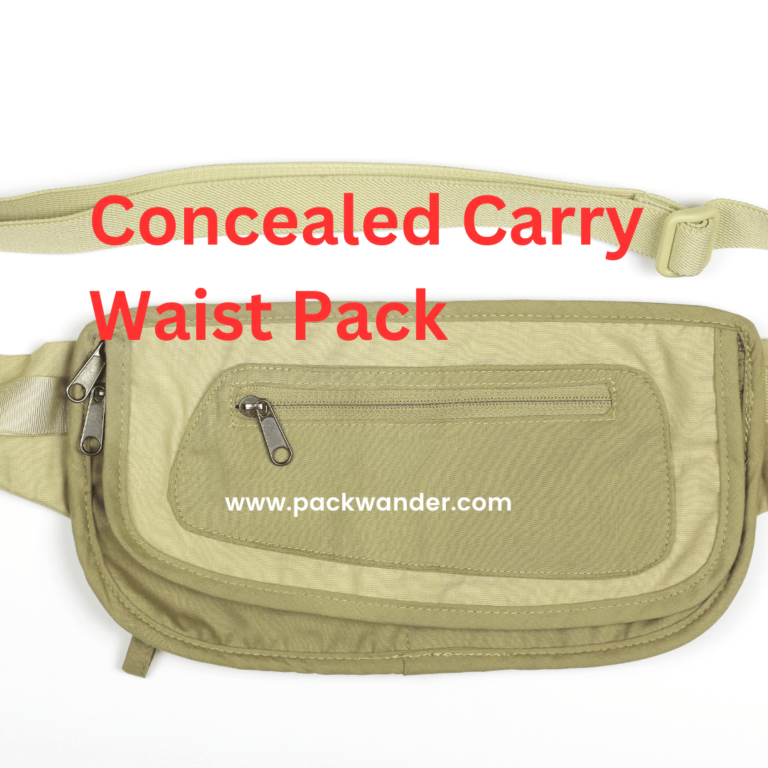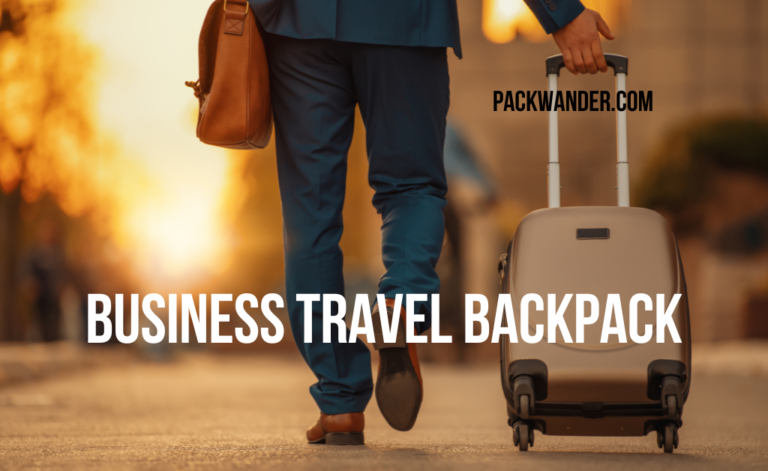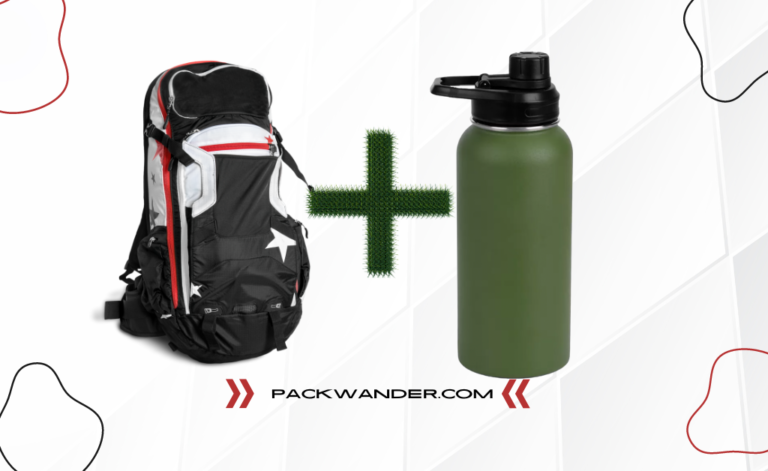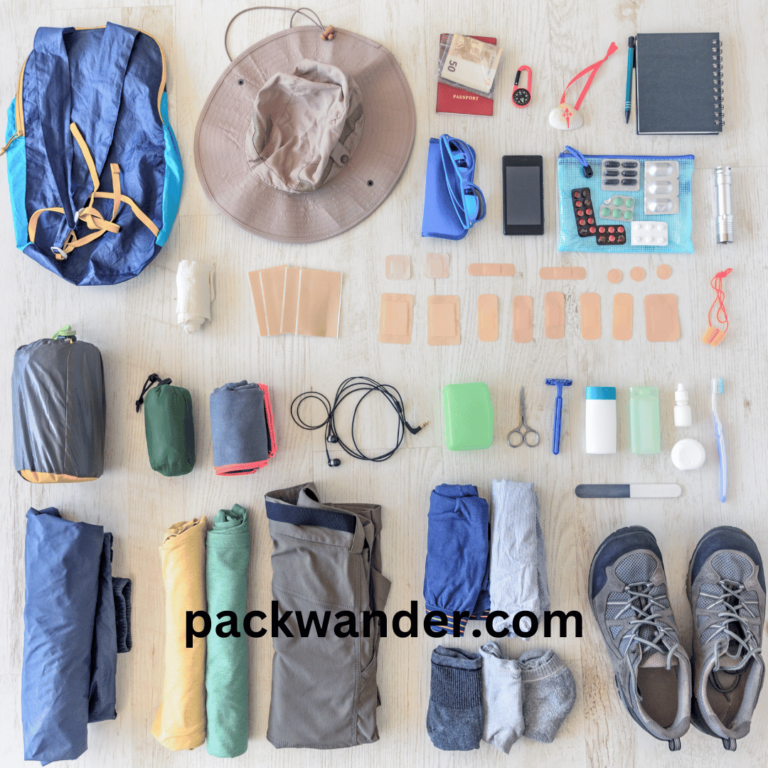How to Backpack Through Europe Like a Pro: Insider Tips and Must-See Destinations
Introduction:
Picture yourself setting out on an exciting backpacking adventure through Europe, where every step leads you to fascinating history, mouthwatering cuisine, and connections with people from all around the world. If you’ve ever dreamt of exploring Europe’s wonders and experiencing its diverse cultures, then this guide on “How to Backpack Through Europe” is tailored just for you.

Backpacking Through Europe is more than just a trip; it’s a fantastic journey for adventurers who want to uncover the heart and soul of this captivating continent. From the lively streets of London to the sun-kissed beaches of Greece, Europe offers something unique and unforgettable around every corner.
Imagine yourself wandering through charming medieval towns, marveling at incredible architecture that has withstood the test of time. Picture yourself savoring delectable pastries in a cozy Parisian café or sipping rich coffee in a bustling Italian square. Each day will bring new experiences, urging you to embrace the unknown and create lasting memories.
But how do you navigate the vastness of Europe? Fear not! This guide has all the essential tips and tricks to turn your dream of backpacking through Europe into reality. We’ll help you plan your adventure, create a flexible itinerary covering must-see landmarks and hidden gems, and pack smartly for your journey.
Whether you’re a seasoned traveler or a first-timer, “How to Backpack Through Europe” has got you covered. Even if you’re exploring solo, we’ll delve into the art of traveling alone, providing valuable advice on staying safe and making friends along the way.
Throughout this guide, we’ll emphasize sustainable travel, leaving a positive impact on the places you visit. You’ll learn to embrace local cultures, connect with friendly locals, and support community initiatives.
So, get ready with your backpack and an adventurous spirit as we set forth on this unforgettable journey across Europe. This guide is your trusty companion and inspiration. Let’s unlock the secrets of this diverse continent and revel in the freedom of exploration. The adventure of a lifetime awaits – let’s learn “How to Backpack Through Europe” together!
Table of Contents
How Long Does It Take to Backpack Through Europe?
Planning your adventure through Europe requires thoughtful consideration of the time you’ll spend on the road, embracing new experiences and traversing diverse landscapes. Determining the duration of your backpacking journey depends on various factors, and we’ll explore them to help you make the best choice for your trip.
Factors to Consider When Determining Trip Duration
- Travel Goals: Consider the experiences you want to gain from your European expedition. Are you eager to immerse yourself in the rich history and culture of multiple cities, or do you prefer a slower pace to savor each destination fully?
- Budget: Your available funds play a significant role in shaping your trip duration. Traveling on a tight budget might lead to a shorter journey, while a more extensive budget could extend your exploration.
- Time Constraints: Evaluate your available vacation time or gap year plans. The length of your journey will directly relate to the time you can dedicate to travel.
- Itinerary Complexity: The number of countries and cities on your must-visit list will impact the time needed to cover each destination adequately.
- Interests and Activities: Consider the activities you wish to partake in, whether it’s exploring historical landmarks, engaging in outdoor adventures, or simply relaxing on serene beaches.
- Transportation Efficiency: Europe’s excellent transportation network allows for efficient travel between cities, influencing the time you spend on the road.
Recommended Duration for Different Travel Styles
- Budget vs. Leisure: For budget-conscious backpackers aiming to cover multiple destinations quickly, a journey of 2 to 3 months can be a great starting point. If you prefer a more leisurely approach, extending your trip to 6 months or even a year will provide ample time to delve into local cultures.
- Fast vs. Slow: Fast-paced travelers can opt for 1 to 2 weeks in each country, ensuring a glimpse of each location’s highlights. On the other hand, slow travelers may spend 1 to 3 months exploring a single country, soaking in the essence of the region.
In conclusion, the duration of your backpacking journey through Europe depends on your personal preferences, budget, and time availability. Whether you choose a whirlwind tour or a leisurely exploration, your adventure promises to be a transformative experience. So, pack your bags and set out to discover the wonders that await as you learn “How to Backpack Through Europe” firsthand.
Best Seasons for Backpacking Through Europe:
Choosing the right time to embark on your European backpacking adventure can greatly influence the experiences you’ll encounter along the way. Each season offers its own unique charm, and understanding the advantages and disadvantages will help you plan an unforgettable journey.
Advantages and Disadvantages of Traveling in Different Seasons
- Spring (March to May)Advantages:
- Pleasant weather with mild temperatures, perfect for outdoor exploration.
- Blooming landscapes and vibrant colors make for picturesque views.
- Fewer crowds compared to the peak summer season.
- Unpredictable weather, occasional rain showers.
- Some tourist attractions may have limited operating hours.
- Summer (June to August)Advantages:
- Warm and sunny weather, ideal for beach destinations and outdoor activities.
- Longer daylight hours provide more time for exploration.
- Festivals and events are abundant during this lively season.
- High tourist season, leading to crowded attractions and higher prices.
- Some popular destinations may be fully booked in advance.
- Autumn (September to November)Advantages:
- Mild temperatures and fewer tourists as the peak season winds down.
- Stunning autumn foliage, creating picturesque landscapes.
- Cultural events and harvest festivals offer authentic local experiences.
- Weather can be unpredictable, with occasional rainfall.
- Some tourist attractions may start to close or have limited hours.
- Winter (December to February)Advantages:
- Magical winter wonderlands, particularly in central and northern Europe.
- Lower prices on accommodation and attractions.
- Fewer tourists, providing a more intimate experience.
- Cold temperatures and shorter daylight hours, limiting outdoor activities.
- Some tourist attractions may be closed during the offseason.
Weather Considerations for Different Regions
- Northern Europe:
- Summers are mild with long daylight hours, making it ideal for exploration.
- Winters can be harsh and dark, but you’ll witness enchanting snowscapes.
- Southern Europe:
- Summers are hot and bustling with tourists, perfect for beachgoers.
- Winters are mild, allowing for more comfortable city sightseeing.
- Central Europe:
- Summers are pleasant, with occasional rain showers.
- Winters offer the charm of Christmas markets and snowy landscapes.
- Eastern Europe:
- Summers are warm, making it an excellent time for outdoor activities.
- Winters can be cold, but you’ll experience fewer crowds and budget-friendly options.
Ultimately, the best season for backpacking through Europe depends on your preferences and the experiences you seek. Each season has its own allure, making Europe an enticing destination all year round. So, consider your desired weather, crowd levels, and cultural events as you plan your adventure and learn “How to Backpack Through Europe” with open arms to all its seasonal wonders.
How to Backpack Through Europe Alone?
Embarking on a solo backpacking adventure through Europe can be an exhilarating and transformative experience. As you explore the continent on your terms, you’ll encounter a world of opportunities and personal growth. However, traveling alone also comes with unique benefits and challenges. This guide will equip you with valuable tips to ensure a safe and fulfilling journey as you learn “How to Backpack Through Europe” solo.
Benefits and Challenges of Solo Backpacking
Benefits:
- Complete Freedom: Traveling alone means you have the freedom to set your own pace, change plans spontaneously, and fully immerse yourself in the experiences that truly resonate with you.
- Self-Discovery: Solo backpacking provides an excellent opportunity for self-discovery and introspection. It allows you to step out of your comfort zone, boosting your self-confidence and independence.
- Meeting New People: Traveling alone often leads to making new friends from around the world. You’ll have more chances to interact with locals and fellow travelers, fostering meaningful connections.
- Personal Growth: Facing challenges and navigating unfamiliar territories will encourage personal growth, adaptability, and problem-solving skills.
Challenges:
- Loneliness: At times, solo travel might lead to feelings of loneliness or homesickness. However, embracing solitude can also provide valuable moments of reflection and appreciation.
- Safety Concerns: As a solo traveler, safety becomes a top priority. Being aware of your surroundings and taking precautions is essential.
- Decision-Making: Solely responsible for planning and decision-making, you may encounter occasional stress in organizing your itinerary.
Tips for Staying Safe and Connected while Traveling Alone
- Research and Plan: Thoroughly research your destinations, understand local customs, and plan your route in advance.
- Stay Connected: Keep loved ones informed of your itinerary and check in regularly with family or friends.
- Choose Accommodation Wisely: Opt for reputable hostels, guesthouses, or homestays that prioritize safety and social interaction.
- Trust Your Instincts: Listen to your intuition and avoid risky situations or unfamiliar places after dark.
- Stay in Public Areas: Avoid isolated spots and stay in well-lit, public areas, especially when exploring at night.
- Meet People Safely: Be cautious when meeting new people, and consider attending social events or group tours to connect with others.
- Scan Important Documents: Keep digital copies of your passport, ID, and other crucial documents in case of emergencies.
- Stay Mindful of Valuables: Keep your belongings secure and avoid displaying expensive items in public.
- Learn Basic Phrases: Familiarize yourself with common phrases in local languages to facilitate communication.
- Trust Local Advice: Seek advice from locals or hostel staff about safe areas and reliable transportation options.
By embracing the benefits and navigating the challenges of solo backpacking, you’ll create unforgettable memories and experiences throughout your journey. Stay safe, be open to new encounters, and savor every moment as you learn “How to Backpack Through Europe” solo and on your own terms.
How to Plan a Backpacking Trip Through Europe?
Embarking on a backpacking trip through Europe requires thoughtful planning and preparation to make the most of your adventure. Whether you’re a seasoned traveler or a first-timer, crafting a well-thought-out plan will ensure a smooth and enjoyable journey. Here’s a step-by-step guide on “How to Backpack Through Europe” like a pro:
Setting a Budget and Saving for Your Journey
- Evaluate Your Finances: Take a close look at your financial situation and determine how much you can allocate for your backpacking trip. Consider expenses like flights, accommodation, food, transportation, and activities.
- Create a Realistic Budget: Plan a daily or weekly budget for your trip, accounting for different costs in various countries.
- Start Saving Early: Begin saving well in advance of your journey to ensure you have enough funds for your preferred travel duration.
- Cut Unnecessary Expenses: Identify non-essential expenses in your daily life and cut back to boost your travel fund.
- Consider Earning While Traveling: Explore options like remote work, freelance opportunities, or working in hostels to support your travels.
Choosing the Right Time to Travel
- Weather Considerations: Decide on the season that aligns with your preferred weather conditions and the activities you want to experience.
- Peak vs. Off-Peak Season: Weigh the pros and cons of traveling during peak or off-peak times. Peak seasons offer more events and activities but may come with higher prices and larger crowds.
- Consider Festivals and Events: Check the calendar for festivals or events happening in your chosen destinations to enhance your cultural experience.
Selecting Countries and Destinations
- Research Destinations: Explore the various countries and regions in Europe to identify the places that resonate with your interests and travel style.
- Prioritize Must-See Places: Create a bucket list of must-visit destinations and landmarks to include in your itinerary.
- Balance Tourist Hotspots and Offbeat Gems: Find a balance between popular tourist attractions and lesser-known, off-the-beaten-path destinations for a well-rounded experience.
- Consider Proximity: Choose destinations that are well-connected geographically to optimize your travel time.
Obtaining Necessary Visas and Travel Documents
- Check Visa Requirements: Research visa requirements for each country you plan to visit, and apply well in advance of your trip if necessary.
- Ensure Passport Validity: Confirm that your passport has sufficient validity for your entire journey.
- Travel Insurance: Purchase comprehensive travel insurance to cover unexpected emergencies and medical needs.
- Scan Important Documents: Keep digital copies of your passport, visas, travel insurance, and other essential documents as backups.
By setting a budget, selecting the right time to travel, choosing your destinations wisely, and obtaining the necessary visas and travel documents, you’ll be well-prepared to embark on your exciting backpacking journey through Europe. Remember to remain flexible in your plans to embrace spontaneous adventures and unexpected opportunities as you learn “How to Backpack Through Europe” with confidence and ease.
Creating an Itinerary for Backpacking Through Europe:
Crafting a well-balanced itinerary is a crucial aspect of your backpacking journey through Europe. As you plan your adventure, striking a harmonious blend between must-see attractions and offbeat gems will provide a rich and fulfilling experience. Additionally, incorporating flexibility into your itinerary ensures you have the freedom to embrace spontaneous opportunities along the way. Here’s a guide on “How to Backpack Through Europe” while curating the perfect itinerary:
Balancing Must-See Attractions with Offbeat Gems
- Research Iconic Landmarks: Identify renowned landmarks and cultural sites in each destination you plan to visit. These include landmarks like the Eiffel Tower in Paris or the Colosseum in Rome.
- Explore Hidden Gems: Dig deeper into each location to uncover lesser-known gems. Seek out local recommendations or explore charming neighborhoods away from the tourist crowds.
- Connect with Locals: Interact with locals and fellow travelers to discover authentic and lesser-known places worth exploring.
- Diversify Your Experiences: Balance historical and architectural wonders with natural landscapes, local markets, and unique cultural experiences.
- Create a Flexible Itinerary: Avoid overpacking your schedule, allowing time for unexpected discoveries and leisurely exploration.
How to Plan Flexibility into Your Itinerary
- Keep Buffer Days: Allow extra days in your itinerary to accommodate unforeseen delays or extend your stay in places you fall in love with.
- Prioritize Your Bucket List: Identify the must-visit places that hold the highest importance to you and ensure they have ample time in your schedule.
- Avoid Overbooking: Resist the temptation to fill every day with activities. Leave room for spontaneous adventures and relaxation.
- Use Open-Ended Tickets: Opt for open-ended or flexible date tickets for attractions, giving you the freedom to decide when to visit.
- Stay Longer if You Love a Place: If you find a destination that captivates your heart, be flexible enough to extend your stay to fully immerse yourself.
- Use Travel Apps: Utilize travel apps that offer last-minute accommodation bookings and spontaneous activity options.
- Talk to Fellow Travelers: Engage with other backpackers and exchange travel experiences to gather ideas for new destinations.
Remember, flexibility in your itinerary allows you to embrace the unexpected and make the most of your backpacking journey through Europe. Embrace the balance between popular tourist spots and lesser-known treasures, savor the moments of spontaneity, and create cherished memories as you learn “How to Backpack Through Europe” with a well-crafted and flexible itinerary.
Backpacking Gear Guide: What to Pack and What to Leave Behind
As you embark on your backpacking journey through Europe, packing the right gear is essential for a comfortable and enjoyable experience. While it’s tempting to bring everything, packing smartly means striking a balance between essential items and leaving unnecessary baggage behind. Here’s a practical guide on “How to Backpack Through Europe” with the right gear:
Essential Clothing and Footwear for Various Climates
- Layering Clothing: Pack versatile clothing that allows layering to adapt to changing weather conditions. Include t-shirts, long-sleeve shirts, a light sweater, and a warm jacket.
- Comfortable Bottoms: Bring a couple of pairs of comfortable pants or shorts that can be dressed up or down as needed.
- Outerwear: A waterproof and windproof jacket is essential, especially if you plan to visit regions with unpredictable weather.
- Footwear: Comfortable walking shoes or hiking boots are a must, along with a pair of sandals for warmer days or hostel showers.
- Undergarments and Socks: Carry enough undergarments and socks for a week, as doing laundry is easy in most hostels.
- Swimwear: Don’t forget your swimwear, as Europe offers stunning beaches and natural pools.
- Headwear and Accessories: A hat or cap to protect from the sun and a scarf for cooler days are practical additions.
- Sleepwear: Lightweight sleepwear for hostel stays ensures a good night’s rest.
Must-Have Travel Accessories and Gadgets
- Backpack: Invest in a quality, comfortable, and durable backpack with sufficient space to hold your essentials.
- Travel Towel: A quick-drying, microfiber travel towel saves space and comes in handy for hostel stays.
- Daypack: A small daypack is ideal for day trips and carrying valuables.
- Reusable Water Bottle: Stay hydrated while reducing plastic waste by carrying a reusable water bottle.
- Universal Adapter: Ensure your electronic devices stay charged with a universal adapter for various socket types.
- Power Bank: A portable power bank keeps your phone charged on the go.
- Travel Locks: Keep your belongings secure with TSA-approved travel locks.
- First Aid Kit: Pack a basic first aid kit with band-aids, pain relievers, and any essential medications.
- Travel Journal and Pen: Document your journey and jot down memorable moments in a travel journal.
- Camera and Memory Cards: Capture stunning landscapes and memories with a reliable camera and ample memory cards.
Remember to pack light, choosing versatile items that can be mixed and matched for different outfits. Prioritize the essentials and leave behind non-essential items that can be easily purchased during your trip. By packing smartly, you’ll be well-prepared to learn “How to Backpack Through Europe” with ease and comfort, allowing you to focus on the incredible experiences that await.
European Cuisine: Trying New Foods on a Budget

One of the most exciting aspects of backpacking through Europe is savoring the diverse and delectable cuisines that each country has to offer. While dining out at fancy restaurants can be tempting, trying new foods on a budget is a rewarding adventure in itself. Here’s a guide on “How to Backpack Through Europe” while exploring European cuisine without breaking the bank:
Exploring Local Street Food and Markets
- Street Food Delights: European cities boast a vibrant street food culture. Seek out local food stalls and try traditional favorites like crepes in Paris, currywurst in Berlin, or churros in Madrid.
- Food Markets: Visit local markets to discover fresh produce, cheeses, meats, and baked goods. Pack a picnic with your market finds and enjoy a budget-friendly meal in a picturesque spot.
- Sample Local Specialties: Each region has its own culinary treasures. Try local dishes like tapas in Spain, pasta in Italy, or moules-frites in Belgium for an authentic taste of the country.
- Lunch Menus: Many restaurants offer affordable lunch menus with a variety of options. Opt for these fixed-price menus to enjoy a delicious meal without spending a fortune.
Cooking in Hostel Kitchens and Picnicking
- Hostel Kitchens: Choose hostels with well-equipped communal kitchens. Cook your meals using local ingredients, saving money and connecting with fellow travelers.
- Shared Meals: Coordinate with other hostel guests to prepare shared meals, making it a fun and social cooking experience.
- Picnicking: Europe’s picturesque parks and scenic landscapes are perfect for picnics. Pack some bread, cheese, fruits, and snacks for a delightful outdoor meal.
- Street Markets: Many street markets offer ready-to-eat snacks and affordable meals. Grab a freshly made sandwich or a local pastry to enjoy on the go.
- Beverage Savings: Limit pricey beverages by opting for tap water, which is safe to drink in most European countries.
Traveler’s Tip: Save on dining expenses by having a substantial breakfast at your hostel, making use of the free or cheap breakfast options commonly provided.
Remember, immersing yourself in the local culinary scene is a delightful way to experience the culture of each country you visit. By exploring street food, cooking in hostel kitchens, and picnicking in beautiful outdoor settings, you’ll relish the essence of European cuisine on a budget. Bon appétit as you learn “How to Backpack Through Europe” while indulging in a world of flavors and tastes without breaking your budget.
Sustainable Backpacking in Europe:
As a responsible traveler, embracing sustainable practices during your backpacking journey through Europe can make a positive impact on the environment and local communities. By minimizing your environmental footprint and supporting eco-friendly initiatives, you can preserve the natural beauty of Europe for future generations to enjoy. Here’s a guide on “How to Backpack Through Europe” sustainably:
Minimizing Environmental Impact While Traveling
- Reduce Plastic Waste: Carry a reusable water bottle and say no to single-use plastics. Refill your bottle at water fountains or ask for tap water at restaurants.
- Pack Light: Travel with only the essentials to reduce carbon emissions from transportation and make your backpack more manageable.
- Choose Eco-Friendly Accommodation: Opt for eco-conscious hostels, guesthouses, or hotels that promote sustainable practices.
- Energy and Water Conservation: Conserve energy and water in accommodations by turning off lights, air conditioning, and faucets when not in use.
- Public Transportation and Cycling: Utilize public transportation, walk, or rent a bike to explore cities and reduce your carbon footprint.
Supporting Local Communities and Eco-Friendly Initiatives
- Buy Local Products: Purchase souvenirs and products made by local artisans and support local businesses.
- Dine at Local Eateries: Eat at locally-owned restaurants and try traditional dishes made with locally-sourced ingredients.
- Respect Wildlife: Observe wildlife from a distance and refrain from touching or feeding animals.
- Learn About Local Culture: Embrace the customs and traditions of each country you visit, showing respect for local heritage.
- Volunteer Opportunities: Engage in volunteer activities that support environmental conservation or community development.
Traveler’s Tip: Consider offsetting your carbon footprint by supporting carbon offsetting programs that invest in renewable energy projects or tree planting initiatives.
By adopting sustainable practices and supporting local communities, you can leave a positive impact on the places you visit during your backpacking journey. Together, we can preserve the beauty and cultural richness of Europe for generations to come. Embrace sustainable backpacking as you learn “How to Backpack Through Europe” with a deep sense of responsibility and care for the environment and its people.
Navigating Public Transportation in Europe:
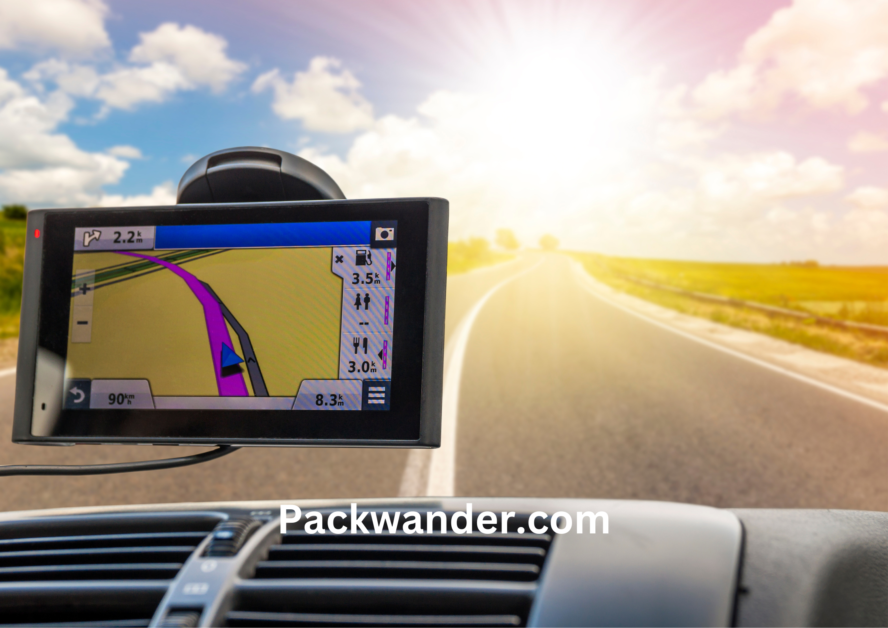
Europe boasts an extensive and efficient public transportation network, making it easy for backpackers to explore the continent. Understanding the train systems, utilizing rail passes, and navigating buses, trams, and metro systems are essential skills for seamless travel. Here’s a beginner’s guide on “How to Backpack Through Europe” using public transportation:
Understanding Train Systems and Rail Passes
- Train Travel Advantages: Trains are a popular and comfortable mode of transportation in Europe, offering scenic views and city-center connections.
- Types of Trains: Europe has various types of trains, from high-speed intercity trains to regional and local trains. Each type caters to different travel needs.
- Eurail Passes: If you plan to visit multiple countries, consider a Eurail Pass, allowing unlimited train travel within a specific duration.
- Regional Passes: For travelers exploring specific regions, regional passes offer cost-effective options for unlimited travel within a designated area.
- Seat Reservations: Some trains require seat reservations, especially high-speed and night trains. Reserve seats in advance during peak travel seasons.
Using Buses, Trams, and Metro Systems
- City Transport Tickets: Most cities have integrated ticket systems covering buses, trams, and metro. Purchase single tickets or day passes for unlimited rides.
- Contactless Payment: Many cities now offer contactless payment options for public transport, allowing you to use your credit card or smartphone for ticketing.
- Public Transport Apps: Download city-specific public transport apps for real-time schedules and route planning.
- Nachtbus (Night Buses): Larger cities often have night bus services for late-night transportation.
- Tram and Metro Maps: Familiarize yourself with tram and metro maps for efficient navigation within cities.
Traveler’s Tip: Avoid peak travel times on city public transport to enjoy a more comfortable journey.
By understanding train systems, utilizing rail passes, and confidently navigating buses, trams, and metro systems, you’ll experience the convenience and freedom of public transportation during your backpacking journey through Europe. Embrace the ease of travel as you learn “How to Backpack Through Europe” using the continent’s efficient and well-connected public transport networks.
Staying Healthy and Fit on the Road:
Maintaining good health and fitness is essential for enjoying your backpacking journey through Europe to the fullest. By following simple tips for eating well, exercising, and managing jet lag and travel fatigue, you can keep your energy levels up and make the most of your adventure. Here’s a guide on “How to Backpack Through Europe” while staying healthy and fit:
Tips for Eating Well and Exercising During Your Journey
- Pack Healthy Snacks: Carry nutritious snacks like nuts, fruits, and granola bars to curb hunger between meals and avoid unhealthy temptations.
- Balance Your Diet: Embrace local cuisines while ensuring a balanced diet. Incorporate fruits, vegetables, proteins, and whole grains into your meals.
- Stay Hydrated: Carry a reusable water bottle and drink plenty of water to stay hydrated, especially during active days.
- Cook in Hostel Kitchens: Utilize hostel kitchens to prepare homemade meals, saving money and controlling your ingredients.
- Explore on Foot or Bike: Walk or rent a bike to explore cities, as it’s an excellent way to stay active while sightseeing.
- Bodyweight Exercises: Perform bodyweight exercises like push-ups, squats, and planks in your hostel room or a nearby park.
- Yoga and Stretching: Practice yoga or stretching to relieve tension and maintain flexibility.
Managing Jet Lag and Travel Fatigue
- Get Adequate Sleep: Prioritize sleep during your journey to allow your body to rest and adjust to new time zones.
- Gradual Time Adjustment: Before your trip, adjust your sleep schedule gradually to match the time zone of your destination.
- Stay Active on Arrival: Engage in light activities upon arrival to combat travel fatigue and help your body adjust.
- Natural Light Exposure: Spend time outdoors in natural light, which can help regulate your body’s internal clock.
- Stay Hydrated and Limit Caffeine: Drink plenty of water and avoid excessive caffeine, as it can disrupt your sleep patterns.
- Take Short Naps: If needed, take short naps to refresh yourself, but avoid extended naps that can interfere with nighttime sleep.
Traveler’s Tip: Carry a small first aid kit with basic medications for headaches, stomach upsets, and common ailments.
By following these tips for eating well, staying active, and managing jet lag and travel fatigue, you’ll feel energized and ready to make the most of your backpacking adventure through Europe. Prioritize your health and well-being as you learn “How to Backpack Through Europe” and create lasting memories while keeping fit on the road.
Unplugged or Connected: Staying Online While Backpacking

Staying online while backpacking through Europe can enhance your travel experience, allowing you to stay connected with loved ones and access useful information. However, finding Wi-Fi hotspots and internet cafes is essential for staying connected without incurring high data charges. It’s equally important to balance your digital presence with fully embracing the moment and the beauty of your surroundings. Here’s a guide on “How to Backpack Through Europe” while managing your online connectivity:
Finding Wi-Fi Hotspots and Internet Cafes
- Hostel Amenities: Many hostels offer free Wi-Fi for guests. Choose accommodations with reliable internet access to stay connected.
- Cafes and Restaurants: Numerous cafes and restaurants across Europe provide free Wi-Fi. Enjoy a coffee while catching up on emails or connecting with friends.
- Public Libraries: Seek out public libraries, which often provide free internet access for visitors.
- City Centers: European city centers usually have free Wi-Fi in public spaces, allowing you to check maps and stay updated.
- Internet Cafes: In some areas, internet cafes still exist and can be a reliable option for accessing the internet.
Balancing Digital Nomadism and Enjoying the Moment
- Limit Screen Time: Be mindful of spending too much time online. Set specific periods for checking emails and social media.
- Offline Exploration: Disconnect from your devices occasionally to fully immerse yourself in the culture and sights around you.
- Use Technology Wisely: Use apps and maps to plan your travel efficiently, but also be open to spontaneous adventures.
- Share Meaningful Moments: Share your travel experiences thoughtfully with friends and family, focusing on quality over quantity.
- Stay Safe Online: Use secure Wi-Fi connections and avoid sharing sensitive information while using public networks.
Traveler’s Tip: Consider purchasing a local SIM card or an international data plan to avoid excessive roaming charges.
By finding Wi-Fi hotspots and internet cafes strategically, you can stay online when necessary without compromising your travel experience. Strike a healthy balance between being connected and embracing the beauty of your surroundings. As you learn “How to Backpack Through Europe”, appreciate the digital conveniences while remaining present in the moment, making your journey even more enriching and memorable.
Hidden Gems and Lesser-Known Destinations:
While Europe is known for its iconic cities and famous landmarks, there are many hidden gems and lesser-known destinations that offer unique and unforgettable experiences. As a backpacker, exploring these underrated cities and towns can be a delightful way to discover the lesser-traveled paths and immerse yourself in local culture. Here’s a guide on “How to Backpack Through Europe” and uncover some of the continent’s hidden treasures:
Underrated Cities and Towns to Explore
- Ljubljana, Slovenia: Slovenia’s charming capital, Ljubljana, offers a picturesque old town, vibrant markets, and scenic riverside walks.
- Bergen, Norway: Nestled among fjords and mountains, Bergen is a colorful and historical city with a rich maritime heritage.
- Porto, Portugal: Porto is a hidden gem known for its captivating architecture, historic wine cellars, and stunning Douro River views.
- Bruges, Belgium: Bruges is a fairytale-like town with medieval architecture, enchanting canals, and delectable chocolate shops.
- Cinque Terre, Italy: This collection of five fishing villages along the Italian Riviera offers breathtaking coastal hikes and quaint village charm.
Unconventional Travel Experiences
- Volunteering on Organic Farms (WWOOF): Join the WWOOF program to volunteer on organic farms across Europe, gaining unique cultural experiences while supporting sustainable agriculture.
- Camping in the Wilderness: Europe has numerous wilderness areas where you can camp under the stars, surrounded by nature’s beauty.
- Exploring Microstates: Visit microstates like San Marino, Andorra, and Liechtenstein, offering distinct cultures and breathtaking landscapes.
- Attending Local Festivals: Check local calendars for unique festivals celebrating cultural traditions, food, music, and art.
- Visiting Abandoned Places: Explore abandoned castles, ghost towns, and industrial sites for a taste of Europe’s mysterious past.
Traveler’s Tip: Engage with locals to discover more hidden gems and offbeat experiences that may not be listed in tourist guides.
By seeking out hidden gems and lesser-known destinations, you’ll gain a deeper understanding of Europe’s diversity and create lasting memories beyond the well-trodden tourist paths. Embrace the opportunity to learn “How to Backpack Through Europe” by venturing off the beaten track and embracing unconventional travel experiences that enrich your journey in unexpected ways.
Budget Accommodation Hacks: Beyond Hostels
While hostels are a popular choice for budget travelers, there are various alternative budget lodging options that offer unique experiences and cost-saving benefits. By exploring options like couchsurfing and work-exchange programs, as well as considering overnight transportation for long journeys, you can stretch your travel budget further and create lasting memories. Here’s a guide on “How to Backpack Through Europe” with budget-friendly accommodation hacks:
Alternative Budget Lodging Options (Couchsurfing, Work-Exchange)
- Couchsurfing: Connect with locals through Couchsurfing, a platform where hosts offer travelers a place to stay for free. It’s an excellent way to experience local hospitality and make new friends.
- Work-Exchange Programs: Join work-exchange programs like HelpX, Workaway, or WWOOF to exchange a few hours of work per day for free accommodation and sometimes meals. Engaging with locals and immersing yourself in their daily life adds depth to your travel experience.
- House Sitting: Consider house-sitting opportunities where you care for someone’s home and pets while they’re away in exchange for free lodging.
- Farm Stays: Experience rural life by staying at farmhouses or agriturismos, often offering affordable accommodation and farm-to-table meals.
- Guesthouses and Homestays: Opt for budget-friendly guesthouses and homestays, especially in less touristy areas, for a more authentic experience.
Overnight Transportation for Long Journeys
- Night Trains: Save on accommodation costs by taking night trains for long journeys between cities. You’ll sleep onboard and wake up in a new destination.
- Night Buses: Night buses are a budget-friendly option for overnight travel, especially for shorter distances.
- Ferry Crossings: Consider overnight ferry crossings for trips between different European countries, enjoying the comfort of onboard cabins.
- Red-Eye Flights: Look for red-eye flights, which depart late at night and arrive early in the morning, to save on both accommodation and travel time.
Traveler’s Tip: Always prioritize your safety and well-being when choosing alternative lodging options. Read reviews and research hosts or places before making a decision.
By exploring alternative budget lodging options like couchsurfing and work-exchange programs, as well as utilizing overnight transportation for long journeys, you’ll discover new ways to make the most of your travel budget. Embrace these budget accommodation hacks as you learn “How to Backpack Through Europe” and embark on an affordable and enriching journey filled with diverse experiences.
Language Tips for Non-English Speaking Countries:
As you backpack through Europe, you’ll encounter various languages and cultures. While English is widely spoken in many tourist areas, learning some basic phrases and using language apps can enhance your travel experience and foster meaningful connections with locals. Embrace the challenges of language barriers as part of your adventure, knowing that communication goes beyond words. Here’s a guide on “How to Backpack Through Europe” with language tips for non-English speaking countries:
Basic Phrases and Language Apps for Communication
- Greetings: Learn common greetings like “hello,” “goodbye,” “please,” and “thank you” in the local language. Locals appreciate the effort to communicate in their native tongue.
- Introductions: Know how to introduce yourself, and ask simple questions like “What is your name?” and “Where are you from?”
- Food and Ordering: Familiarize yourself with food-related phrases, as ordering in the local language can enhance your dining experiences.
- Directions: Learn words for basic directions like “left,” “right,” “straight,” and “stop,” to navigate unfamiliar places.
- Numbers and Prices: Be able to recognize and use numbers for bargaining and understanding prices.
- Language Apps: Download language apps like Duolingo, Google Translate, or Babbel to help with translations and pronunciation.
Embracing the Challenges of Language Barriers
- Non-Verbal Communication: Embrace non-verbal communication, like gestures and facial expressions, as a way to connect with locals.
- Be Patient and Respectful: Understand that not everyone may speak English fluently. Be patient and respectful when trying to communicate.
- Use Visual Aids: Utilize maps, pictures, or translate text to overcome language barriers in challenging situations.
- Learn from Locals: Don’t be afraid to learn from locals, as they may teach you colloquial phrases and cultural nuances.
- Smile and Stay Positive: A smile is universally understood and can break down barriers, making interactions more pleasant.
Traveler’s Tip: Carry a pocket-sized phrasebook for quick reference, especially in regions where English is not commonly spoken.
As you navigate non-English speaking countries, remember that genuine connections transcend language barriers. Embrace the challenges with a positive attitude, and you’ll find that the effort to communicate in the local language enhances your travel experiences and fosters meaningful interactions. Learn “How to Backpack Through Europe” with an open heart and a willingness to connect with people from diverse backgrounds, enriching your journey in more ways than words can express.
Backpacking Safety: Tips for a Secure Journey

Ensuring your safety during your backpacking journey through Europe is paramount. By taking precautions to protect your belongings from theft and navigating nightlife and party scenes responsibly, you can have a secure and enjoyable trip. Here’s a guide on “How to Backpack Through Europe” with safety tips for a worry-free adventure:
Protecting Your Belongings from Theft
- Use Locks: Keep your backpack secure with sturdy locks, especially in crowded places or on public transport.
- Anti-Theft Bags: Consider using anti-theft bags with hidden zippers and reinforced straps to deter pickpockets.
- Separate Valuables: Keep important documents, money, and electronics in a money belt or a secure pouch under your clothing.
- Hostel Security: Use lockers in hostels to store your valuables when you’re out exploring.
- Avoid Flashy Items: Leave expensive jewelry and flashy electronics at home to avoid drawing unnecessary attention.
Navigating Nightlife and Party Scenes Safely
- Buddy System: Always stick with a reliable travel buddy, especially in unfamiliar places or late at night.
- Know Your Limits: Drink responsibly and know your alcohol limits. Excessive drinking can impair judgment and make you vulnerable.
- Stay in Public Places: Avoid going to isolated areas or accepting invitations to private locations from strangers.
- Transportation Safety: Use reputable taxi services or ride-sharing apps, especially when returning to your accommodation late at night.
- Trust Your Instincts: If a situation feels uncomfortable or unsafe, trust your instincts and remove yourself from it.
Traveler’s Tip: Keep digital copies of important documents (passport, visas, etc.) in a secure cloud storage or email them to yourself for easy access if needed.
By being proactive about protecting your belongings and adopting responsible behavior during nightlife and party scenes, you can safeguard yourself and enjoy your backpacking journey with peace of mind. Embrace these safety tips as you learn “How to Backpack Through Europe” and focus on the incredible experiences and memories that await you while prioritizing your well-being and security throughout your adventure.
Making the Most of Free and Discounted Activities:
Backpacking through Europe doesn’t have to break the bank. By taking advantage of free and discounted activities, you can enrich your travel experience without overspending. From free walking tours and cultural events to student discounts and city cards, here’s a guide on “How to Backpack Through Europe” while making the most of your budget:
Free Walking Tours and Cultural Events
- Free Walking Tours: Many cities offer free walking tours led by knowledgeable guides. These tours provide insight into local history, landmarks, and hidden gems.
- Parks and Gardens: Enjoy the beauty of European parks and gardens, where you can relax, have a picnic, and soak in the local atmosphere.
- Museums and Galleries: Some museums and galleries offer free entry on specific days or evenings, providing opportunities to explore art and culture without cost.
- Cultural Festivals: Check local event calendars for cultural festivals, music concerts, and outdoor performances, which often offer free admission.
- Beaches and Coastal Walks: If you’re traveling to coastal regions, spending time at the beach and taking scenic coastal walks costs nothing and provides memorable experiences.
Student Discounts and City Cards
- Student Discounts: If you’re a student, carry your student ID card to avail discounts on entry fees for attractions, public transport, and more.
- City Tourist Cards: Many cities offer tourist cards providing free or discounted entry to major attractions, public transport, and other perks.
- Hostel Discounts: Some hostels offer discounts or freebies on tours, meals, or drinks, so inquire at your accommodation about available offers.
- Public Transport Passes: Look for multi-day public transport passes, which can save money if you plan to use public transport extensively.
- Bicycle Rentals: Renting bicycles is an economical way to explore cities while staying active.
Traveler’s Tip: Check with local tourism offices or online platforms for updated information on free and discounted activities in each city.
By taking advantage of free walking tours, cultural events, student discounts, and city cards, you can make the most of your backpacking journey through Europe without compromising your budget. Embrace these money-saving tips as you learn “How to Backpack Through Europe” and savor the rich cultural experiences that Europe has to offer while keeping your wallet happy.
Learning and Growing through Travel:

Backpacking through Europe isn’t just about visiting new places; it’s a transformative journey that fosters personal development, self-discovery, and an expanded worldview. As you embrace the challenges and joys of travel, you’ll find yourself growing in ways you never imagined. Here’s a guide on “How to Backpack Through Europe” and the enriching experiences that await you:
Personal Development and Self-Discovery on the Road
- Adapting to Change: Traveling exposes you to new cultures, languages, and environments, teaching you to adapt and be flexible.
- Stepping Out of Comfort Zones: Backpacking pushes you to step out of your comfort zones, leading to personal growth and increased confidence.
- Cultural Immersion: Immersing yourself in different cultures allows you to gain a deeper understanding of the world and appreciate its diversity.
- Problem-Solving Skills: Handling travel challenges sharpens your problem-solving skills and resourcefulness.
- Building Resilience: Overcoming travel obstacles builds resilience, making you more resilient in facing life’s challenges.
Gaining New Perspectives and Worldview
- Cultural Exchange: Interacting with locals and fellow travelers broadens your perspectives and challenges preconceived notions.
- Environmental Awareness: Witnessing diverse landscapes and ecosystems fosters a deeper appreciation for nature and environmental conservation.
- Historical Context: Exploring historical sites provides insights into humanity’s shared history and the significance of preserving cultural heritage.
- Social Issues and Empathy: Exposure to different social realities cultivates empathy and a desire to contribute positively to the world.
- Global Connectivity: Building connections with people from different backgrounds fosters a sense of global community and interconnectedness.
Traveler’s Tip: Keep a travel journal to reflect on your experiences, insights, and personal growth throughout your journey.
As you backpack through Europe, embrace the transformative power of travel. Each new destination offers the opportunity for personal development and self-discovery. Embrace the lessons and experiences that come your way, allowing them to shape your worldview. Learn “How to Backpack Through Europe” not just as a tourist, but as a traveler seeking growth, enlightenment, and an appreciation for the vastness of the world and its people.
Must-Visit Destinations in Europe for Backpackers
Europe is a treasure trove of captivating destinations, offering something for every backpacker’s taste. From iconic cities to hidden gems, the continent beckons with diverse landscapes and rich cultures. Here’s a guide on “How to Backpack Through Europe” and some must-visit destinations, both popular and off-the-beaten-path:
Popular Destinations:
- Barcelona, Spain: With its stunning architecture, vibrant street life, and beautiful beaches, Barcelona is a vibrant city full of art and culture.
- Paris, France: The City of Love needs no introduction, boasting iconic landmarks like the Eiffel Tower and Louvre Museum.
- Amsterdam, Netherlands: Known for its picturesque canals, historic charm, and thriving nightlife, Amsterdam is a must-visit destination.
- Prague, Czech Republic: This fairy-tale city enchants with its medieval architecture, charming bridges, and lively atmosphere.
- Berlin, Germany: A city rich in history and culture, Berlin offers a blend of art, music, and a vibrant urban scene.
Off-the-Beaten-Path Destinations:
- Plitvice Lakes National Park, Croatia: Explore this UNESCO-listed park with cascading waterfalls and crystal-clear lakes.
- Sintra, Portugal: Discover fairytale palaces and lush forests in this enchanting town near Lisbon.
- Budva, Montenegro: A hidden gem on the Adriatic coast, Budva boasts sandy beaches and a medieval old town.
- Tallinn, Estonia: Step back in time with Tallinn’s well-preserved medieval architecture and cobbled streets.
- Interlaken, Switzerland: Nestled between two beautiful lakes, Interlaken is a paradise for outdoor enthusiasts with hiking, skiing, and paragliding opportunities.
Traveler’s Tip: Be open to exploring lesser-known destinations, as they often offer unique experiences away from the tourist crowds.
As you backpack through Europe, be sure to visit popular destinations like Barcelona, Paris, and Amsterdam, but also venture off-the-beaten-path to discover hidden gems like Plitvice Lakes, Sintra, and Tallinn. Embrace the diversity of Europe’s landscapes and cultures as you learn “How to Backpack Through Europe” and create unforgettable memories in these must-visit destinations that will stay with you long after your journey is over.
Budgeting and Money-Saving Tips

Backpacking through Europe on a budget requires careful money management and creative ways to stretch your funds. By effectively managing expenses and implementing money-saving strategies, you can make the most of your travel budget and extend your journey. Here’s a guide on “How to Backpack Through Europe” with budgeting and money-saving tips:
Managing Expenses on the Road
- Set a Daily Budget: Determine a realistic daily budget that covers accommodation, food, transportation, and activities.
- Track Your Spending: Keep a record of your expenses to stay aware of where your money is going and identify areas where you can cut back.
- Cook Your Meals: Utilize hostel kitchens and local markets to prepare your own meals, saving money on dining out.
- Public Transport Passes: Opt for multi-day or weekly public transport passes to save on individual ticket costs.
- Free and Low-Cost Activities: Take advantage of free walking tours, local festivals, and outdoor attractions that don’t require admission fees.
Ways to Stretch Your Budget
- Travel Off-Peak: Consider traveling during shoulder seasons or off-peak times when accommodation and transportation costs are lower.
- Stay in Hostels: Hostels offer budget-friendly accommodation, and some even include free breakfast.
- Travel with a Group: Splitting costs for accommodations, food, and transportation with travel buddies can significantly reduce expenses.
- Couchsurfing and Work-Exchange: Embrace Couchsurfing or work-exchange programs to stay with locals or earn free lodging in exchange for work.
- Discount Cards and Student IDs: Look for student discounts and city tourist cards that offer reduced entry fees and transportation discounts.
Traveler’s Tip: Set aside an emergency fund for unexpected expenses to avoid financial stress during your journey.
By being mindful of your daily budget, tracking expenses, and embracing money-saving strategies, you can make your travel budget go further and enjoy an extended backpacking journey through Europe. Learn “How to Backpack Through Europe” with financial savvy, and savor the experiences that come your way while staying within your means.
The Art of Solo Travel: Making Friends on the Road
Traveling solo offers incredible opportunities for self-discovery and independence. However, it’s also a chance to connect with fellow travelers and locals, making the journey even more enriching. By following these tips for meeting people and building connections, as well as joining social events and group activities, you can embrace the art of solo travel while making lifelong friends. Here’s a guide on “How to Backpack Through Europe” with a focus on socializing and building connections:
Tips for Meeting People and Building Connections
- Stay in Hostels: Hostels are vibrant social hubs where fellow travelers gather. Opt for dorm rooms to meet like-minded individuals.
- Be Approachable: Smile, initiate conversations, and be open to meeting new people from different cultures and backgrounds.
- Attend Meetups and Events: Check online platforms and local notice boards for meetups, language exchanges, and cultural events in the area.
- Use Social Media: Join travel-related groups and forums on social media platforms to connect with other backpackers and get travel tips.
- Volunteer: Engage in volunteer activities or join community projects to interact with locals and fellow travelers.
Joining Social Events and Group Activities
- Free Walking Tours: Participate in free walking tours, as they not only offer insights into the city but also provide opportunities to meet fellow travelers.
- Pub Crawls and Nightlife: Join pub crawls or nightlife tours to bond with other solo travelers and experience the city’s nightlife scene.
- Group Day Trips: Consider joining group day trips or adventure tours to explore nearby attractions while sharing the experience with others.
- Cooking Classes and Workshops: Attend cooking classes, language workshops, or cultural experiences that encourage interaction with others.
- Shared Transportation: Travel on shared transportation like buses or trains, where you can strike up conversations with fellow passengers.
Traveler’s Tip: Trust your instincts when meeting new people and prioritize your safety in social situations.
By embracing the art of solo travel and actively seeking connections, you’ll discover the joy of making friends on the road. Learn “How to Backpack Through Europe” while immersing yourself in a diverse community of travelers and locals, enriching your journey with shared experiences, laughter, and lifelong friendships. Solo travel becomes an empowering and heartwarming adventure when you open yourself to building meaningful connections along the way.
The End of the Journey: What to Do After Backpacking Europe
As your backpacking adventure through Europe comes to an end, it’s time to reflect on your experiences and prepare for the transition back to everyday life. Reintegrating into your normal routine and planning future travel adventures can be both exciting and challenging. Here’s a guide on “How to Backpack Through Europe” for what to do after your journey:
Reintegrating into Everyday Life
- Reflect on Your Journey: Take some time to reflect on the memories, lessons, and personal growth you gained from your backpacking experience.
- Share Your Stories: Share your travel stories and photos with family and friends, reliving the highlights and unique moments of your journey.
- Appreciate Home Comforts: Embrace the familiar comforts of home while cherishing the newfound appreciation for the experiences you had on the road.
- Stay Open-Minded: Carry the open-mindedness and adaptability you developed during your travels into your daily life.
- Set New Goals: Use your backpacking journey as inspiration to set new goals, whether they be related to travel, career, or personal growth.
Planning Future Travel Adventures
- Create a Travel Bucket List: Begin dreaming and planning your next travel adventures by creating a travel bucket list filled with destinations you wish to explore.
- Budget and Save: Start budgeting and saving for your future trips, so you can embark on new adventures without financial stress.
- Learn New Languages: If you plan to visit non-English speaking countries, consider learning basic phrases in the local language to enhance your travel experiences.
- Join Travel Communities: Engage with travel communities and forums online to gain insights and tips from fellow travelers.
- Stay Curious and Adventurous: Cultivate curiosity and a sense of adventure in your everyday life, seeking new experiences and opportunities.
Traveler’s Tip: Don’t let the end of one journey be the end of your travel spirit; let it ignite a passion for more adventures ahead.
As you reintegrate into everyday life, carry the lessons and memories of your backpacking journey with you. Use your experiences to enrich your daily life and stay connected to the travel community. Keep dreaming, planning, and exploring as you continue your journey of personal growth and wanderlust. Embrace “How to Backpack Through Europe” not as a singular trip but as a stepping stone to a lifetime of fulfilling travel adventures.
Conclusion:
Embarking on a backpacking journey through Europe is a transformative experience filled with adventure, self-discovery, and unforgettable memories. As you reflect on your journey, you realize that it was not just about visiting new places, but also about embracing different cultures, meeting inspiring individuals, and stepping out of your comfort zone. “How to Backpack Through Europe” is not just a guide; it’s a testament to the incredible possibilities that await those who dare to explore the world with an open heart and an adventurous spirit.
Throughout your travels, you learned the art of budgeting, the joy of making new friends, and the beauty of navigating language barriers. You embraced hidden gems and popular destinations alike, and each experience left an indelible mark on your soul. You discovered the art of solo travel, finding strength in independence and joy in shared moments with fellow adventurers.
As you return to everyday life, you carry with you the lessons learned on the road. You’ve grown in ways you never thought possible, and your worldview has expanded in the most beautiful ways. You now appreciate the richness of cultural diversity, the importance of sustainability, and the value of being present in the moment.
So, to all those reading this, I encourage you to embark on your own backpacking adventure through Europe. Step outside your comfort zone and dive into the unknown, for it is in those moments that you truly come alive. Travel opens your eyes, enriches your soul, and connects you to a world full of wonders waiting to be explored.
Remember, it’s not just about the destinations you visit, but the connections you make and the experiences you embrace. “How to Backpack Through Europe” is a guide, but the journey itself is a story waiting to be written. So, go forth with courage, curiosity, and an open heart. Travel, explore, and make the most of every moment. Your backpacking adventure awaits, and it’s bound to be nothing short of extraordinary.

